With a huge percentage of the population now online (72% of men and 76% of women) it’s no wonder the social websites have become as important to individuals as real life has. The general population have begun to expect that you have social media connections of some kind, and many users consider businesses and individuals without at least three social media connections to be odd. Users are also more likely to have more close ties and be less socially isolated than the average person if they have a social networking profile.
Ironically, social media presence now plays a significant part in your humanization to those you interact with. Once you’ve gained a socially acceptable level of social media presence, you are free to roam as you please. Some help build relationships, or use it as a tool to gain popularity, a professional presence, advertise a product or themselves. Personally, I both give and gain from the tools I use; but the tools I use are ever-changing marvels, ebbing and flowing like the masses of internet users it works for; who as a whole decide what become popular and what fades from relevancy. Micro-blogging, a new category of social media, is rapidly taking off. Even ten years ago, we could not have imagined such a technique could exist, let alone grow to make up some of the most popular media sites of all time (Facebook, Twitter, Tumblr, Google+) establishing itself as a unique and all-encompassing social media tool and relationship builder within its own right.
I will be reflecting on my journey as a social user; my experiences with social media as an individual and how I embraced micro-blogging as a means of expression that has re-written how I present myself and my information to my online audience.
Painting the Perfect Picture of Yourself
So how do I present myself? My strategy is certainly nowhere near as exciting as the average business or power hungry internet user. On Facebook, I make an effort to post interesting content; funny, interesting or personally important to my life, with the intention of keeping my online friends entertained and informed with my presence.
I don’t make a huge effort here. Facebook I consider home base – who I am. My aim is when a new friend sees my page they can see my recent life highlights. Things I have achieved and enjoyed while being an engaging user. Since Facebook introduced the timeline in 2012, it’s been easier to see Facebook as life summary than just another profile; which is why it’s also become particularly important to make sure there is nothing your potential employer could have fault with- half the reason I post sparingly to mine.
The other half is my lack of love for Facebook. Facebook is a social tool; but one that doesn’t provide me with much. My top use for Facebook is as a convenient communication tool, but I can without a doubt say my messages from the past three months are 100% work or university related. My contacts simply aren’t interested in using Facebook to communicate or keep up to date. And with no motivation, I do the same. Slowly, in the space of two years or so, Facebook has gone from my number one to one of my least favorite social media platforms.
My number one goal when using social media is to engage with others, Enrich my need to connect and to receive empathy and acknowledgement from what I post.
I’m a busy bee type person; the kind who has no foreseeable days off and juggles work between university and often stays up til three am to do assignments after finishing work at midnight. Often, I like to vent. Work, team mates, computers can be frustrating. I’ve had Tumblr for a long time and have always seen it as my go-to platform to voice my thoughts and troubles. However, as time went on I noticed anything I posted would get very little attention, maybe a few dozen likes at best. Even good friends of mine would often ignore (or not see) my personal posts. This is frustrating, as what I was really looking for was some acknowledgement, even a small amount.
As I’ve mentioned before, I see Facebook as a professional tool and felt uncomfortable posting personal thoughts, even if it was just to rant about how a program wouldn’t load. Around this time I started getting into Instagram. As another micro-blogging platform, it truly involved me and I started to follow lots of users who started to use it as their primary blog; yes, sometimes even posting 100-150 word captions with their photos.
Soon, I started to want to do the same. I noticed far more reception to my Instagram posts from close friends than I had ever had in my 6+ years on Tumblr. The much larger amount of close friends I had on Instagram is what initially drove me towards Tumblr, but it was those same friends who drew me back. This probably wasn’t Instagram inventor Kevin Systrom’s plan when he designed the original app, but the adaptive nature of human beings has made it so.
However, all my facebook friends are also on Instagram. What’s the difference? Why do I see such a difference between the same people on a different medium? In my opinion, the age of written blogs is gone (so 90’s!) Having been exposed to rich content in small packages, users crave more information with every post and more reward for their efforts online.
Twitter is another micro-blogging platform and by far the best known example of the phenomena. However, the development of part time, “one handed” blogging has not drawn me to twitter’s blue gates. The reason is that no one in my social circle uses the website. I should mention that I have never been one to simply go where the masses go- instead, I adapt to the social environment where those I want to stay in contact with are most prevalent. But Twitter, a site with 232 million active users could not interest me or any of my friends; to me it is a social community full of strangers.
Adapting to the Flow
Instagram has 90% of its user’s under 30. This makes Instagram great for small businesses, brands and also micro-bloggers: who want to absorb lots of information fast with minimal effort. I consider myself a micro-blogger, someone who has very little time for hobbies and no talent for creative writing. My compatriots of Instagram are likewise; with millions of pictures uploaded per day, content posted has to be pretty interesting to garner significant attention; but if it’s too much of the same thing it will be ignored.
Many users make micro-blogging into an art form. This is a common trend, it’s easy to see: a profile with sloppy, uninteresting and un-anaesthetic pictures will have a poor amount of followers (tell us how you really feel Issy!) but some profiles, often photographers, businesses or users with lots of time on their hands put as much effort as you’d put into a traditional written blog as they do Instagram. But like a small community, even the tiniest of posts can full of comments from close friends.
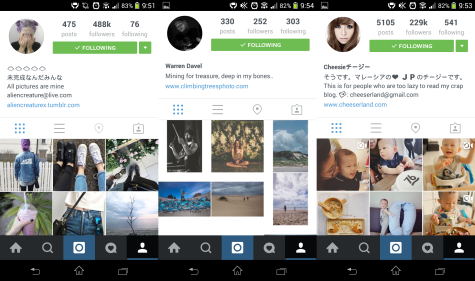
Some examples of people who have transformed their Instragram accounts aesthetically- with the goal of being visually pleasing and attracting an audience.
Once introduced to Instagram, writing to create effect became a thing of the past. I developed a new identity in the form of stylised, attractive photos which collectively create an endearing and intimate portrait. My audience wanted faster updates, and the return I got from my Instagram posts was enough to tell me that being simple, personally engaging and visually gratifying is the identity that works for me.
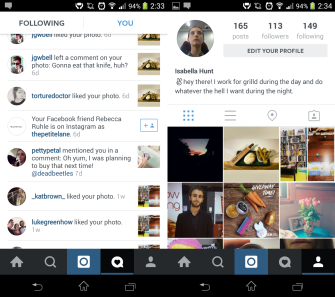 Seeing others interests and adding my own spin is what has made Instagram a personal (and ever growing!) success for me.
Seeing others interests and adding my own spin is what has made Instagram a personal (and ever growing!) success for me.
Through several series of micro-posts, a reader can develop an accurate and intimate picture of the bloggers life. Michael Haenlein called this phenomena ambient awareness. This is why media-rich sites like Twitter or Tumblr provide a high level of social presence (the acoustic, visual, and physical contact that can be achieved between two individuals (Short, Williams, & Christie, 1976)); and media richness, defined as the amount of information that can be transmitted in a given time interval (Daft & Lengel, 1986). Markopoulos, de Ruyter, & Mackay (2007) reported that “Awareness systems such as these … can lead to increased effectiveness, stronger social-relationships and overall improved well-being”. This has certainly been my experience. Using short and quick up-to date posts, I am engaging my followers constantly and am so engaging them more than a traditional blog would- by means of “continuously engaging in strategic activities to convey an impression to others which is within their self-interest” (Goffman, 1959)
What have I learned?
Social media is about connection. I have discovered that sites that have fallen flat for me personally (Tumblr, Facebook, Twitter) are ones where a social connection couldn’t be made without significant effort. Through my social media moves, I have been displaying the natural human motive: to go where the people are. A great example of an en-masse version of this happened to social media sites like Myspace or Bebo. In 2011, Myspace was reported to have lost 50 million users in a year, and 10 million in just the month of February. The mass exit from Myspace is so well known it is known as the ‘Myspace effect’ (Zach Whittaker, 2011).
As a time constrained person, I don’t have the time to blog in any traditional means (vlogging, wordpress or picture based blogs) But still desire to enrich my social life in some way. Micro-blogging has worked at personalizing my blogging experience to fit my needs and in the process I have adapted to fully utilize new platforms.
PDF, Article and Book References that are Otherwise not Previously Cited
Goffman, E. (1959). The presentation of self in everyday life. New York: Doubleday Anchor Press.
Andreas M. Kaplan , Michael Haenlein. (2011). The early bird catches the news: Nine things you should know about micro-blogging. Kelley School of Business.
Zach Whittaker, 2011. MySpace lost 10 million users in a month; Close within the year? http://www.zdnet.com/article/myspace-lost-10-million-users-in-a-month-close-within-the-year/.
Daft, R. L., & Lengel, R. H. (1986). Organizational information requirements, media richness, and structural design. Management Science, 32(5), 554—571.
Markopoulos, P., de Ruyter, B., & Mackay, W. (2007). Introduction to this special issue on awareness systems design. HumanComputer Interaction, 22(1), 1—6.



 news forum? All news stations, and many news businesses have been known to spread
news forum? All news stations, and many news businesses have been known to spread 

 later, after I left 4chan and filled my time with other things, DYEL started to pop up everywhere. Facebook, Tumblr, Reddit… even those I knew in real life started to copy the chant.
later, after I left 4chan and filled my time with other things, DYEL started to pop up everywhere. Facebook, Tumblr, Reddit… even those I knew in real life started to copy the chant.

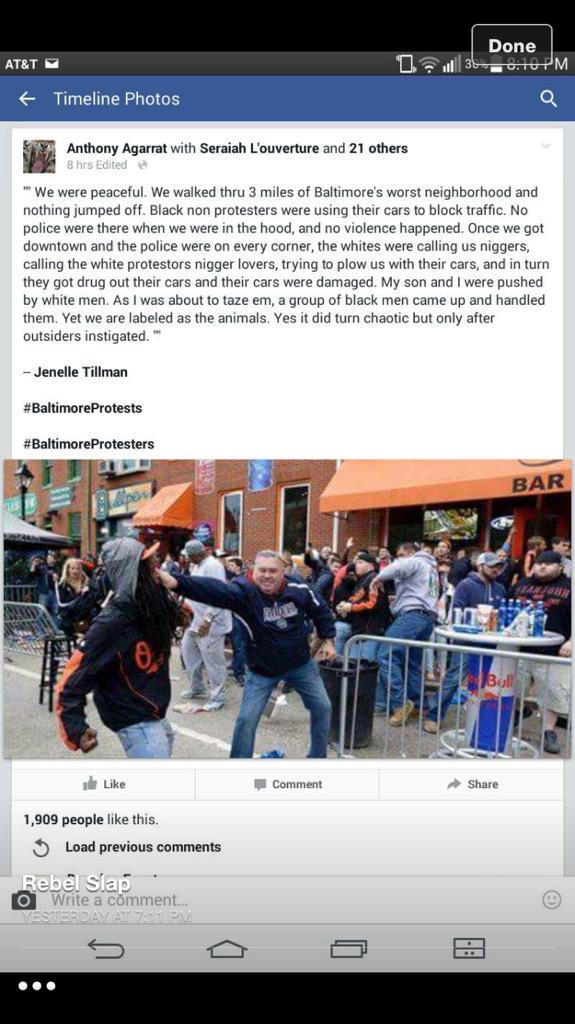
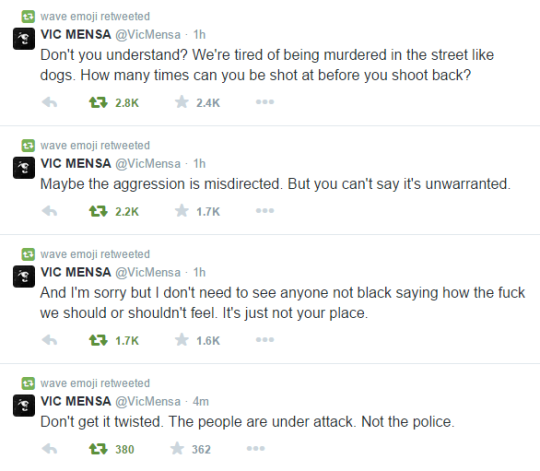

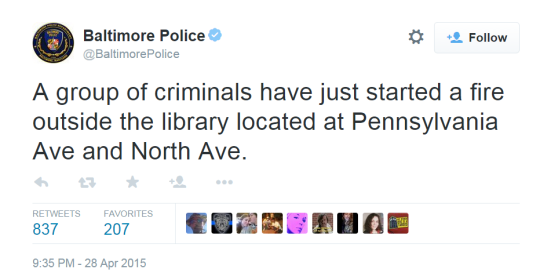
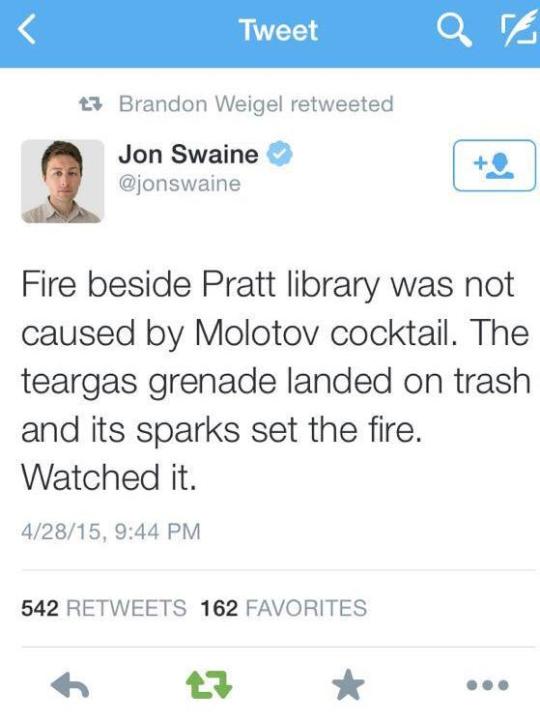





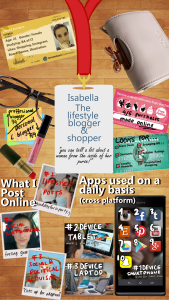
 Really cool!
Really cool!


